Speakers & Abstracts
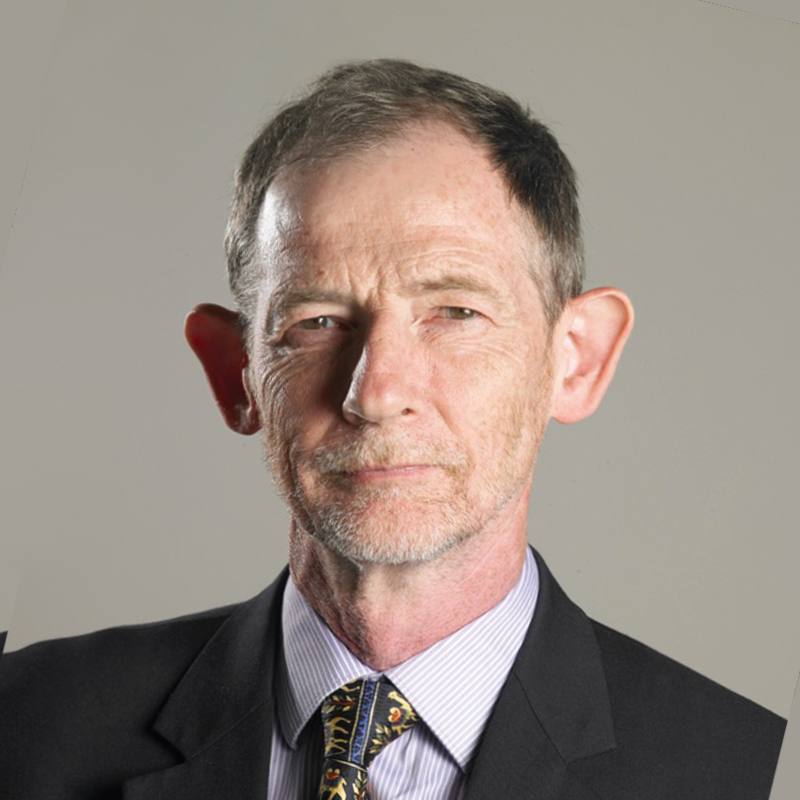
Professor at Heriot-Watt University, Edinburgh, UK
Foreign Member of the French Academy of Sciences
Fellow of the Royal Society, UK
Member of the Academia Europaea
Abstract
The talk will describe various generalizations of the Hadamard jump condition, and how they can lead to information about polycrystal microstructure arising from martensitic phase transformations. Joint work with Carsten Carstensen (Humboldt University, Berlin).
Biography
Professor John Ball is Professor of Mathematics at Heriot-Watt University in Edinburgh. From 1996-2018 he was Sedleian Professor of Natural Philosophy at the Mathematical Institute, University of Oxford. He is an Emeritus Professor in Oxford and an Emeritus Fellow of The Queen's College. Before this he was Professor of Applied Analysis at Heriot-Watt University from 1982-1996. He took an undergraduate degree in Mathematics at Cambridge, and obtained a D.Phil. in 1972 at the University of Sussex under the direction of David Edmunds.
He moved to Heriot-Watt in 1972 on an SRC postdoctoral fellowship, which enabled him to spend an extended period at Brown University, where he began work on the existence of solutions to the equilibrium equations of nonlinear elasticity, as well as furthering his interest in infinite-dimensional dynamical systems. The recipient from 1980-85 of an SERC Senior Fellowship, he has held Visiting Professorships at the University of California at Berkeley, at the Université Pierre et Marie Curie, Paris, at the Tata Institute of Fundamental Research, Bangalore, at the Institute for Advanced Study, Princeton, and at the University of Montpellier II.
He was elected a Fellow of the Royal Society of Edinburgh in 1980, a Fellow of the Royal Society in 1989, an Associé Etranger of the Académie des Sciences in 2000, a Fellow of the Institute for Mathematics and its Applications in 2003, a Foreign Member of the Istituto Lombardo in 2005, a Foreign Member of the Norwegian Academy of Science and Letters in 2007, a Member of the Academia Europaea in 2008, and a Fellow of the American Mathematical Society in 2012. Other awards include the 1981 Whittaker Prize of the Edinburgh Mathematical Society, the 1990 Keith Prize of the Royal Society of Edinburgh, the 1995 Naylor Prize in Applied Mathematics of the London Mathematical Society, the 1999 Theodore von Kármán Prize of the Society of Industrial and Applied Mathematics, the 2003 David Crighton Medal of the Institute of Mathematics and its Applications and the London Mathematical Society, the 2006 Royal Medal of the Royal Society of Edinburgh, the 2009 Sylvester Medal of the Royal Society, the 2012 John von Neumann Lecture and Prize of SIAM, the 2018 King Faisal Prize for Science, the 2018 Leonardo da Vinci award of the European Academy of Sciences, Honorary Fellowship of St John’s College, Cambridge in 2005, Honorary Membership of the Edinburgh Mathematical Society in 2008, and Honorary Doctorates from the Ecole Polytechnique Fédérale de Lausanne, Heriot-Watt University, the University of Montpellier II, the University of Sussex, the University of Edinburgh, the Université Pierre et Marie Curie and the University of Bucharest.
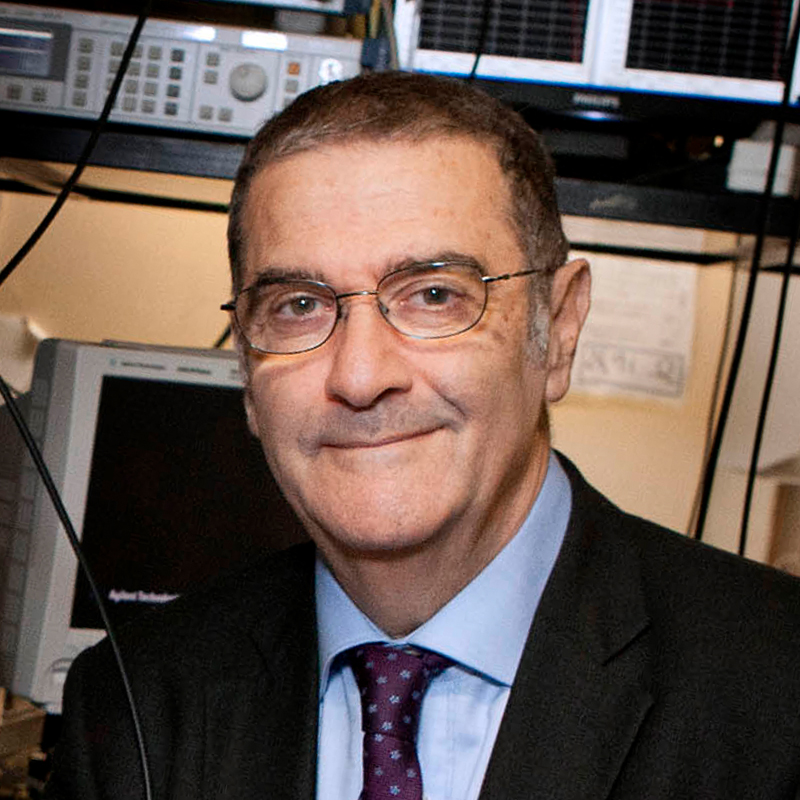
Professor Emeritus at the Collège de France
Member of the French Academy of Sciences
Foreign Member of the National Academy of Sciences, USA
Nobel Laureate in Physics
Abstract
Basic science and technology have always progressed together. Since the dawn of modern science, fundamental discoveries motivated by curiosity have led to the development of new tools, which have increased our ability to investigate Nature, leading to further discoveries. Quantum physics provides an illustration of this virtuous circle. After the laws ruling the behavior of electrons, atoms and photons have been discovered, technologies exploiting these rules have emerged, which would have astonished the founding fathers of the theory. Computers, lasers, atomic clocks, magnetic resonance imaging machines have been invented, improving our means to calculate, to store information and to communicate. These devices have in turn been essential to push basic science further. The laser for instance is used to cool, trap and control single atoms in experiments exploring in depth the strange laws of quantum theory such as state superposition and entanglement. These basic studies let us envision a second quantum revolution in technology. The quantum computer would exploit the strangeness of logical gates being at the same time open and closed in order to compute faster than today’s machines. Its realization, still far from certain, would require further breakthroughs in basic science. In the mean time, other examples of new quantum technologies are coming of age in the fields of communication and metrology. And, as the history of science is teaching us, unexpected inventions are bound to emerge from the fundamental knowledge that quantum physicists are acquiring in their laboratories. The talk will conclude with some general remarks about the conditions required to achieve a fruitful symbiosis between basic science and applications.
Biography
Professor Serge Haroche graduated from École normale supérieure (ENS), receiving his doctorate from Paris VI University in 1971 (thesis advisor: Claude Cohen-Tannoudji). After a post-doctoral visit to Stanford University in the laboratory of Arthur Schawlow (1972-73), he became full professor at Paris VI University in 1975, a position he held until 2001, when he was appointed Professor at Collège de France, where he held the Chair of Quantum Physics and was Director from 2012 to 2015.
He has been Maître de Conference at École Polytechique (1974-1984), visiting professor at Harvard (1981), part time professor at Yale University (1984-1993), member of Institut Universitaire de France (1991-2000) and chairman of the ENS Department of Physics (1994-2000). His research has mostly taken place in laboratoire Kastler Brossel at ENS, where he now works with a team of senior coworkers, postdocs and graduate students.
Professor Serge Haroche has received many prizes and awards, including the Grand Prix Jean Ricard of the French Physical Society (1983), the Einstein Prize for Laser Science (1988), the Humbold Award (1992), the Michelson Medal from the Franklin Institute (1993), the Tomassoni Award from La Sapienza University (Rome, 2001), the Quantum Electronics Prize of the European Physical Society (2002), the Quantum Communication Award of the International Organization for Quantum Communication, Measurement and Computing (2002), the Townes Award of the Optical Society of America, the CNRS Gold Medal (2009) and the Herbert Walter Prize of the German Physical Society and the Optical Society of America.
He was awarded the Nobel Prize in Physics (with David J. Wineland) in 2012.
He is a member of the French Academy of Sciences and a Foreign Member of the National Academy of Sciences of the United States and the American Academy of Art and Sciences. He has received in 2009 a five year advanced research grant from the European Research Council (ERC).
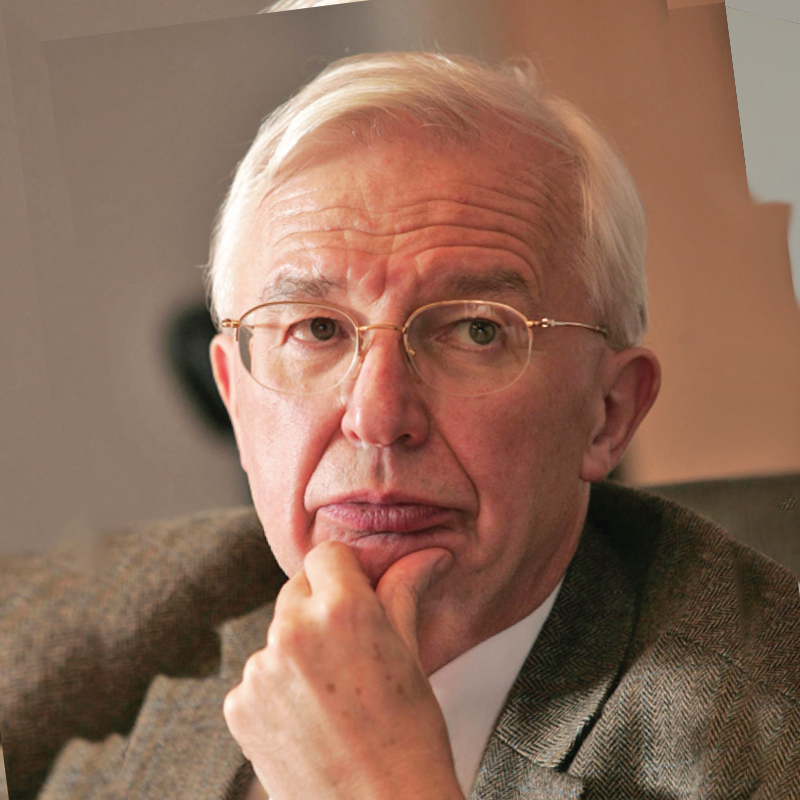
Professor at the University of Strasbourg Institute for Advanced Study
Foreign Member of the Chinese Academy of Sciences
Member of the French Academy of Sciences
Nobel Laureate in Chemistry
Abstract
The evolution of the universe has generated more and more complex forms of matter through self-organization, from particles up to living and thinking matter. Mankind has created science to unravel the ways and means by which matter has become organized up to a thinking organism, in particular on our planet Earth. Self-organization is the process by which steps towards life and thought have emerged. Animate as well as inanimate matter, living organisms as well as materials, are formed of molecules and of the organized entities resulting from the interaction of molecules with each other. Chemistry provides the bridge and unravels the steps from the molecules of inanimate matter and the highly complex molecular architectures and systems which make up living and thinking organisms. Molecular chemistry has developed very powerful methods for constructing ever more complex molecules from atoms. Supramolecular chemistry seeks to understand and control the formation and behaviour of complex molecular assemblies. The field of chemistry is the universe of all possible structures and transformations of molecular matter, of which those actually realized in nature represent just one world among all the worlds that await to be created. Conceptual considerations on science in general will be presented. Science shapes the future of humanity !
Biography
Professor Jean-Marie Lehn became Professor of Chemistry at the Université Louis Pasteur in Strasbourg and from 1979 to 2010 he was Professor at the Collège de France in Paris. He is currently Professor at the University of Strasbourg Institute for Advanced Study (USIAS). He shared the Nobel Prize in Chemistry in 1987 for his studies on the chemical basis of "molecular recognition" (i.e. the way in which a receptor molecule recognizes and selectively binds a substrate), which also plays a fundamental role in biological processes.
Over the years his work led to the definition of a new field of chemistry, which he has proposed calling "supramolecular chemistry" as it deals with the complex entities formed by the association of two or more chemical species held together by non-covalent intermolecular forces, whereas molecular chemistry concerns the entities constructed from atoms linked by covalent bonds. Subsequently, the area developed into the chemistry of "self-organization" processes and more recently into "constitutional dynamic chemistry".
Author of more than 1,000 scientific publications, Professor Lehn is a member of many academies, including the French Academy of Sciences, the Chinese Academy of Sciences, and the National Academy of Sciences of USA. He has received numerous international honours and awards.
He was awarded the Nobel Prize in Chemistry (with Donald J. Cram and Charles J. Pedersen) in 1987.
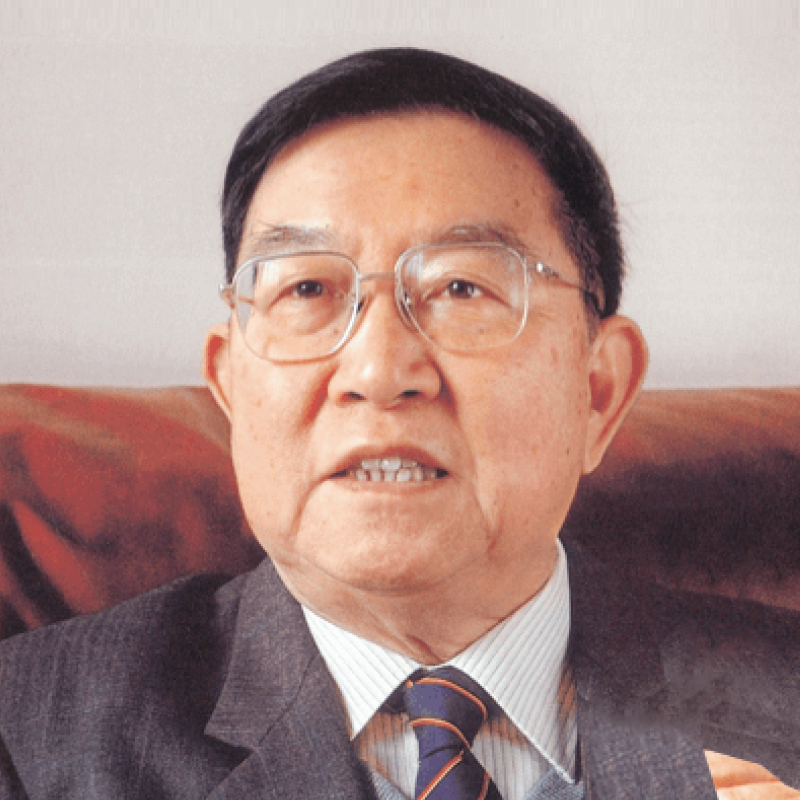
Professor at Fudan University, Shanghai
Member of the Chinese Academy of Sciences
Fellow of The World Academy of Sciences
Foreign Member of the French Academy of Sciences
Abstract
In this survey talk, the synchronization will be initially studied for systems governed by partial differential equations instead of systems governed by ordinary differential equations, and will be closely connected with the control theory via boundary controls in a finite time interval. Various kinds of exact boundary synchronizations and approximate boundary synchronizations will be introduced and realized by means of fewer boundary controls for a coupled system of wave equations with Dirichlet boundary controls. Moreover, as necessary conditions to various kinds of approximate boundary synchronizations, criteria of Kalmam's type are obtained and employed.
Biography
Professor Tatsien Li is one of the best specialists of the theory and numerical analysis of nonlinear hyperbolic partial differential equations, a domain where major difficulties abound, as well as a domain of fundamental importance in applications. These include in particular nonlinear elasticity and gas dynamics. For all his contributions to these fields, Professor Li has been elected to five national or international Academies, and he has received numerous prestigious awards and honors, including the Second Prize (1982) and Third Prize (1997) of the National Natural Sciences from the State, the First Prize (1992) and Second Prize (1985, 1986) of the Scientific and Technological Progress from the State Education Commission, and the First Prize (1987) of the Scientific and Technological Progress from Shanghai Municipality.
Guided by the objective of acquiring a better understanding of the theory and physics of shocks that occur in gas dynamics, Professor Li has developed a new theory of local existence of classical and discontinuous solutions for the most general quasi-linear hyperbolic systems with two variables.
In another series of fundamental contributions, Professor Li has established the existence of classical solutions for the Cauchy problem for general quasi-linear hyperbolic systems, with "sufficiently small" initial data. This work constitutes a double achievement: First, it provides optimal estimates of lower and upper bounds for the "life-span" of a classical solution; second, it can be applied to the system of nonlinear elastodynamics.
More recently, Professor Li was able to obtain the first satisfactory mathematical modeling of "diagraphy of wells by resistivity", a method of fundamental importance in petroleum exploitation. This work led him to introduce a new family of boundary value problems, called "boundary value problems with equipotential surface". He then studied such problems, both theoretically and numerically, in particular by successfully applying homogenization theory to the modeling of an electrod composed of many parts. It is a measure of the success and power of his approach that it is currently used in more than ten petroleum fields over the world.
Professor Li is not only an eminent mathematician. During the past decades, he has been extremely influential in the development of the pure and applied mathematical community. In particular, a very far-sighted initiative was taken in 1998 by the late Jacques-Louis Lions, one of the most prominent applied mathematicians of the twentieth century, and Professor Li, who together co-founded the ISFMA, the Institut Sino-Francais de Mathematiques Appliquees, or Chinese-French Institute of Applied Mathematics.
Thanks to the tireless efforts of Professor Li, this Institute, which is housed on the campus of Fudan University, has organized every year since 1998 highly successful Summer Schools, which have considerably contributed to the promotion and development of "modern" pure and applied mathematics in Asia and in the rest of the world.
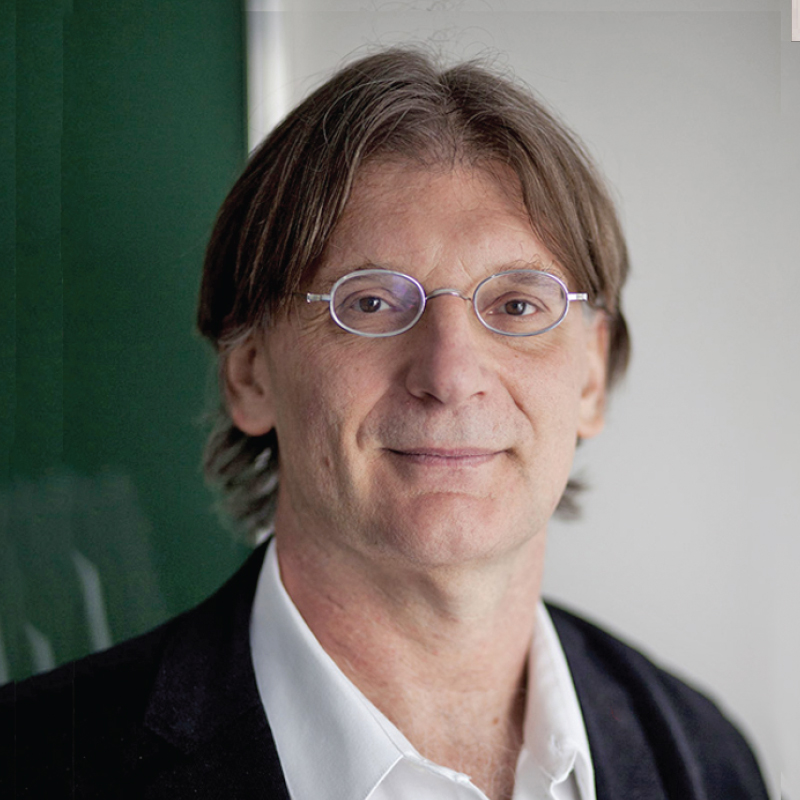
Professor at the Collège de France
Member of the Academia Europaea
Member of the French Academy of Sciences
Fields Medalist
Abstract
This talk will be a general presentation of Mean Field Games (MFG in short), a new class of mathematical models and problems introduced and studied in collaboration with Jean-Michel Lasry. Roughly speaking, MFG are mathematical models that aim to describe the behavior of a very large number of “agents” who optimize their decisions while taking into account and interacting with the other agents. The derivation of MFG, which can be justified rigorously from Nash equilibria for N players games, letting N go to infinity, leads to new nonlinear systems involving ordinary differential equations or partial differential equations. Many classical systems are particular cases of MFG like, for example, compressible Euler equations, Hartree equations, porous media equations, semilinear elliptic equations, Hamilton-Jacobi-Bellman equations, Vlasov-Boltzmann models... In this talk, we shall explain in a very simple example how MFG models are derived and present some overview of the theory, its connections with many other fields and its applications.
Biography
Professor Pierre-Louis Lions is one of the most prominent experts of the theory of nonlinear partial differential equations. He is a Professor at the Collège de France in Paris, where he holds the Chair of "Partial Differential Equations and Applications" since 2002. He was also a Professor of Applied Mathematics at the École Polytechnique in Palaiseau, France, from 1992 to 2016.
Professor Pierre-Louis Lions has made lasting contributions to the mathematical analysis of the Boltzman equation, the compressible Navier-Stokes equations, the Hamilton-Jacobi equations, the Hartree-Fock equation, image processing, viscosity solutions, concentration compactness, mean field games, and stochastic partial differential equations.
Professor Pierre-Louis Lions is a member of the French Academy of Sciences, of the Accademia dei Lincei, of the Academies of Sciences of Argentina, Chile, and Brazil, of the Academia Europaea, of the Istituto Lombardo, of the Accademia di Napoli, of the French Academy of Technologies, of the World Academy of Sciences (TWAS), and of the Royal Academy of Belgium.
Professor Pierre-Louis Lions has received numerous awards, including the prestigious Fields Medal in 1994, the Grand Prize Ampère from the French Academy of Sciences, the Grand Prize from the INRIA, France, the IBM Prize, and the Philip Morris Prize. He is Doctor Honoris Causa at Heriot-Watt University, at City University of Hong Kong, at the Ecole Polytechnique Fédérale de Lausanne, at Bucharest University, and at Narvik University. He is listed as an ISI highly cited researcher.
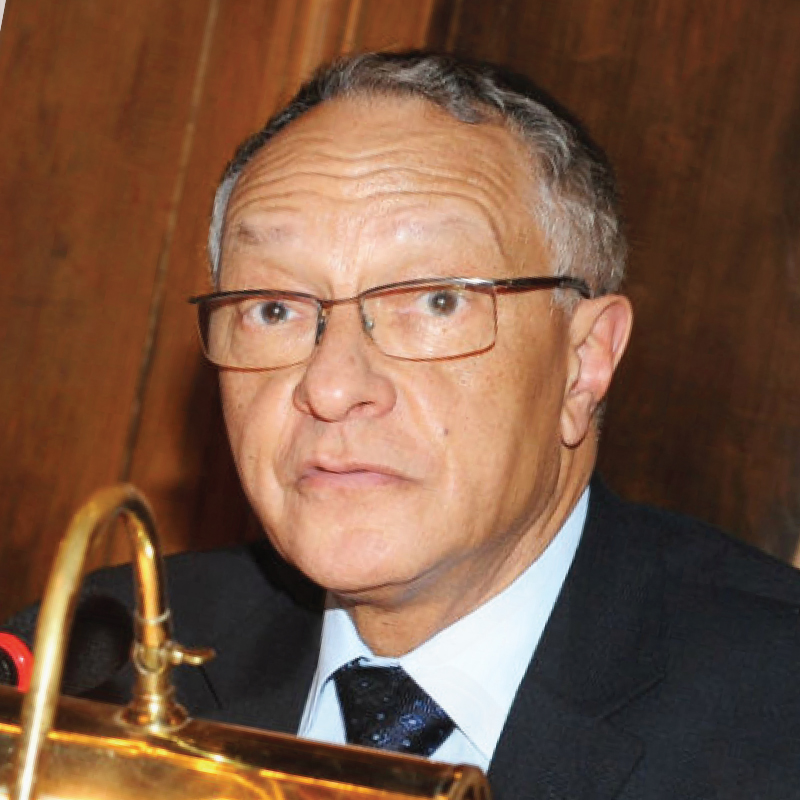
Professor Emeritus at the École Polytechnique, France
Member of the French Academy of Sciences
Member of the French Academy of Technologies
Member of the Academia Europaea
Abstract
The two first “Days” of Galileo’s Dialogues concerning two new sciences (1638) are devoted to what is now commonly called the Strength of Materials, in an attempt to derive the resistance of simple structures (“machines”) from what he defines as the resistance of their constituent materials (“matter”). His rationale consists in stating that machine equilibrium and matter resistance must be compatible, an argument that became the cornerstone of stability analyses in civil engineering for centuries, up to the present theory of Yield Design and subsequent developments. Within the same framework, Galileo was concerned about size effects on the design of structures: he is considered as having provided the first example of Dimensional Analysis, a theory that has been developed since the end of the 19th century and found its full mathematical proof in the mid of the twentieth century, with current applications to Reduced Scale Modelling.
Biography
Professor Jean Salençon is Honorary Professor at the École polytechnique and the École nationale des ponts et chaussées (France). He was Chair professor-at-Large and Visiting Distinguished Professor at City University of Hong Kong (2011-2016).
He was the President of the French Academy of Sciences during the years 2009 & 2010 and presided over the Institut de France in 2009. He is also a Member of the French Academy of Technologies, a foreign Member of the Istituto Lombardo (Milano) and of the Academia das Ciências de Lisboa (Portugal), a Honorary Member of the Hungarian Academy of Sciences and a Corresponding Member of the Académie des sciences et lettres de Montpellier (France).
He is a recognized leader, worldwide, in the field of Continuum Mechanics. More specifically, his research activities were essentially developed in the Solid Mechanics Laboratory (École polytechnique, Palaiseau, France) with, as an essential characteristic, the transfer of basic concepts and results in Continuum Mechanics to practical applications in civil and mechanical engineering. Among his major contributions, one may mention the elaboration of a Theory of Yield Design based upon the only concept of yield strength of the constituent materials and simple mathematical results of convex analysis as a convenient general framework for all types of stability analyses: slopes and dams, anisotropic and reinforced soils, yield design of plates and slabs, probabilistic approach, homogenization, etc. Other aspects of the research activities of Jean Salençon include Viscoelasticity, Elastoplasticity, and Elasticity.
Professor Jean Salençon is the author of more than 200 publications including 17 books and textbooks, eight tutorial and practical multimedia software.



